Xieng Khuan (Buddha Park)
More than 200 statues filled with cryptic symbols give this park spot an aura of horror vacui fantasy.
The park has something distinctly ancient looking about it. Giant Buddhas lounge as Vishnu looks on, and Shiva menaces both with eight arms full of weaponry.
In fact, the Xieng Khuan, or “Spirit City” park was built in 1958 by Luang Pu (translated as Venerable Grandfather) Bunleua Sulilat. Luang Pu Bunleua Sulilat was a priest-shaman, myth-maker, mystic and sculpture artist with a large following in Laos and later in Thailand. Born into a family of eight children in Thailand Sulilat was supposedly mentored by a hermit named Keoku whom he met after falling in cave. Sulilat’s particular brand of mysticism integrated Hinduism and Buddhism and united the Thai and Laotian peoples. Later Sulilat was forced to flee from Laos to Thailand after the revolution in 1975. There, he built another sculpture park, Sala Keoku in Nong Khai.
Xieng Khuan park was Sulilat’s first sculpture park and was built by the side of the Mekong River, about 25 kilometers from Vientiane. Said to have been built by himself and his students – all non-trained artists – the park is an astounding display of outsider artistry. The iconography is reflective of the imaginative the philosophy of this man, and closely resembles a south-east Asian interpretation of the mannerist gardens of 1600s Europe such as the Monsters of Bomazaro park, in Italy.
The more than 200 statues, filled with cryptic symbols, concentrated in a small area give the Xieng Khuan park spot an aura of horror vacui fantasy. Among these ferro-concrete sculptures are skeleton thin Buddhas, a giant pumpkin with with a demon head for an opening and three floors representing Heaven, Hell and Earth as well as a gigantic 40 meter long reclining Buddha.
Sadly, the place is about to fall into ruins because of floods from the Mekong River and a general lack of conservation. If it is now already a place of surreal lore that looks of ancient ruins, it will surely transform into something even stranger when it actually becomes ruins.
Know Before You Go
To get there, you can take a bus (Bus #14 from Vientianes main bus station) which run about every 40 minutes. Be careful with hiring a tuk-tuk though; more than likely you will be charged an exorbitant amount to get there and back.There are sometimes food carts about that serve food and beer, as well as a nearby riverside restaurant.The entrance fee is 15000 kip for foreigners.


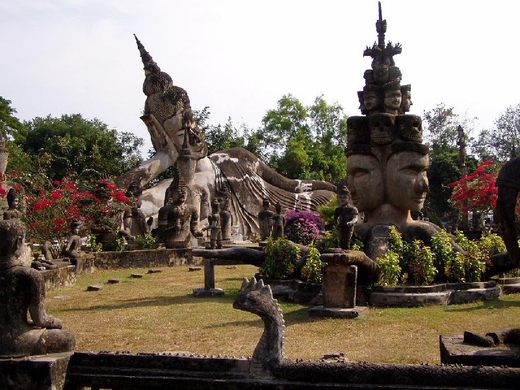
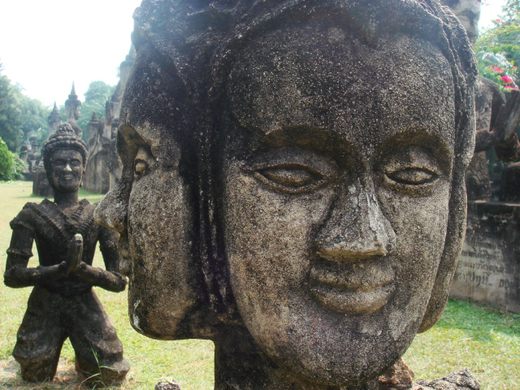
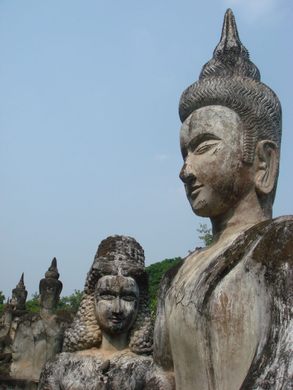
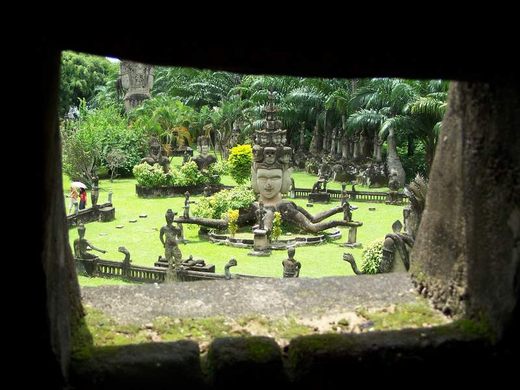
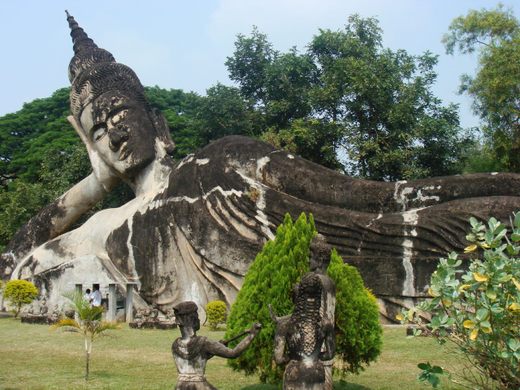
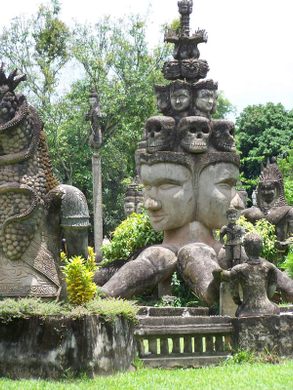
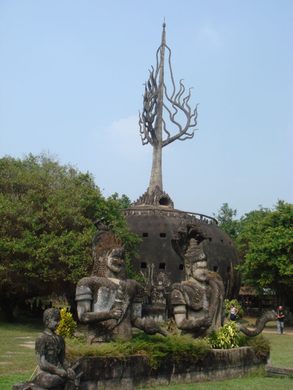
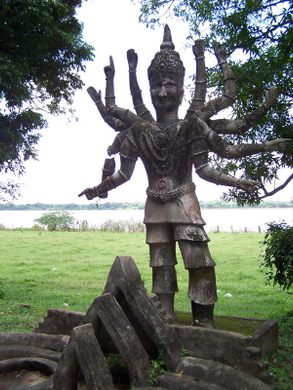
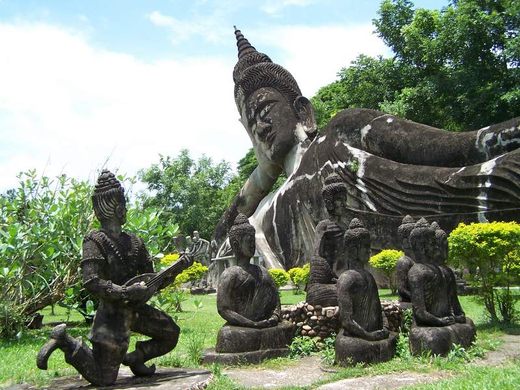

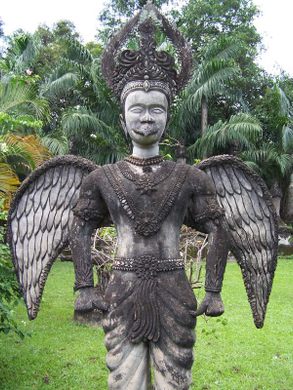
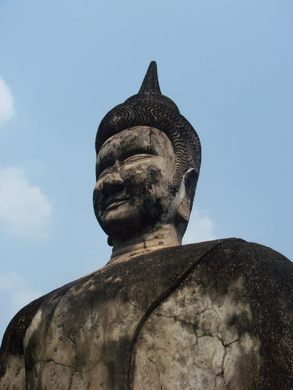
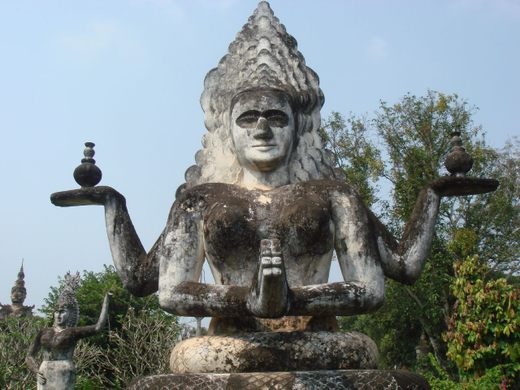
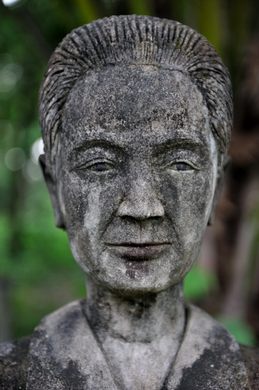
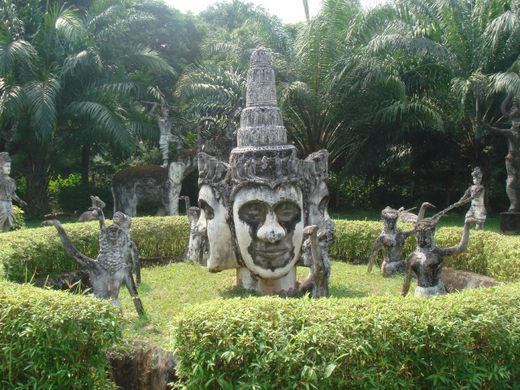
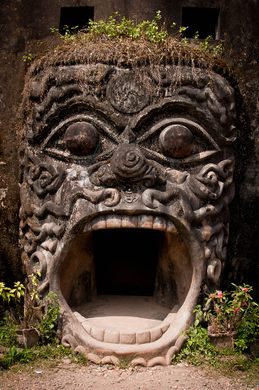


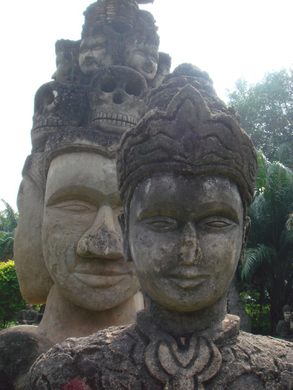













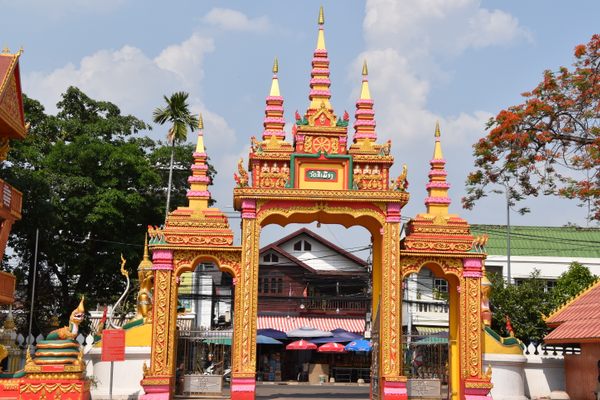

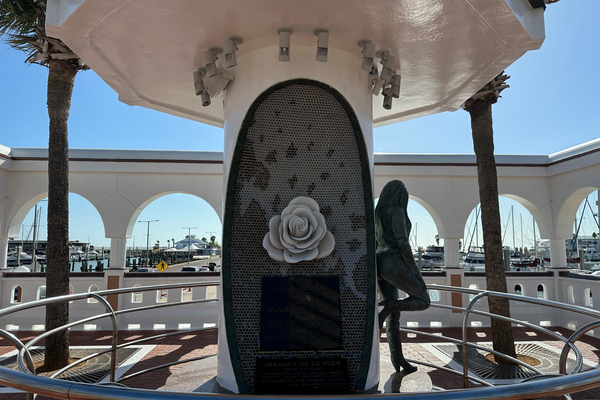
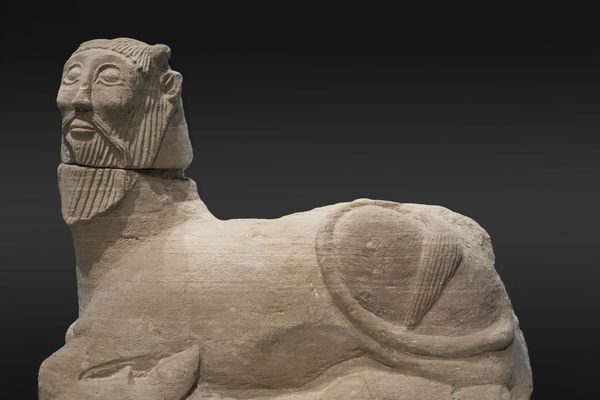




Follow us on Twitter to get the latest on the world's hidden wonders.
Like us on Facebook to get the latest on the world's hidden wonders.
Follow us on Twitter Like us on Facebook